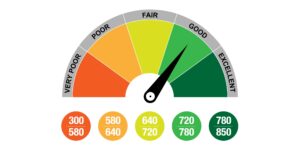In finance, where every decision can tip the scales between success and setbacks. One key factor often goes unnoticed until it’s too late: Credit Risk Management. For businesses, efficient credit risk management is the linchpin holding profitability andgrowth in perfect balance. With the ever-changing economic landscape, it has become increasingly important for financial institutions and… Continue reading Turning Risk to Revenue: The Path to Enhanced Profitability
Tag: credit risk management
As the holidays approach, many people find themselves in a financial bind. If you’re among them, you might be considering a loan to get you through the season. As you explore your options for Christmas gifts and travel, you may come across lenders advertising “Christmas loans”—though these offers should be approached with caution. Should you get one this holiday season?
What is Christmas Loan, and how does it work?
A festival loan is a type of personal loan offered by online lenders and credit unions during the festival season. It can be a secured or unsecured loan, depending on the lender’s requirements. Borrowers’ terms and eligibility are determined by a variety of factors that vary by lender, including credit and income. To receive the most competitive interest rates, borrowers need to have good credit scores.
Some lenders require a minimum credit score, whereas others don’t check your credit at all. Lenders that don’t require a credit check typically charge high rates. In fact, these no-credit-check Christmas loans are essentially payday loans with fees equivalent to interest rates of 400% or higher.
If you decide to take out a Christmas loan, it’s important to shop around for lenders and find the right one.
Are Christmas Loans worth it?
A Christmas loan can relieve some financial stress and give you some peace of mind this holiday season. At the same time, though these loans are often easy to obtain and fast to process, they don’t provide a long-term solution. The Consumer Financial Protection Bureau (CFPB) states that consumers who take out an unaffordable payday loan often end up taking out another one to pay it back, thereby getting stuck in a debt trap.
Things to consider while shopping for a Christmas loans
Check your credit: Before taking out a loan, it’s useful to know what your credit score is and what’s on your credit report. The stronger your credit, the better rate you’ll likely get on a loan.
Keep up with payments: Christmas loans are instalment loans, and you will need to plan for this in your budget and be sure you can afford the payments.
Fast funding option: If you choose an online lender, generally the application and funding process is quick and easy and can receive the loan the same business day.
Check multiple lenders: Compare multiple options before choosing a lender so you can find the best rates and terms.
Pros and cons of Christmas loans
Before getting a Christmas loan to cover your holiday spending, consider these pros and cons
Pros
- Fast funding
- Some loans don’t require a credit check
- Short-term loans with fixed payment line
- Fast and simple loan application
Cons
- Potentially high interest rates
- May be a payday loan
- Could lose collateral
- Expensive fees
Nutshell
If you find yourself spending more than you can afford, try taking out a Christmas loan. However, before you take on debt, it’s important to understand the potential risks, like high fees and interest. If you find yourself spending past your means, check back in with your budget as a reminder of what you can afford this year. By setting limits upfront, you may be able to make it through the holiday season without carrying debt into the new year.
The LendTech Collective
Insights to stay ahead!
Bimonthly Newsletter | Nov 2022 | Issue 121
Featuring
- Christmas Loan- should you consider borrow one for Christmas spending?
- Loan default risk prevention and management in economic uncertainty-tips to lenders
- In the News
- Major Events
Focus On
Christmas Loan – Should you consider borrow one for holiday spending?
As the holidays approach, many people find themselves in a financial bind. If you’re among them, you might be considering a loan to get you through the season. As you explore your options for Christmas gifts and travel, you may come across lenders advertising “Christmas loans”—though these offers should be approached with caution. Should you get one this holiday season?
What is Christmas Loan and how does it work?
A festival loan is a type of personal loan offered by online lenders and credit unions during the festival season. It can be a secured or unsecured loan, depending on the lender’s requirements. Borrowers’ terms and eligibility are determined by a variety of factors that vary by lender, including credit and income. To receive the most competitive interest rates, borrowers need to have good credit scores.
Some lenders require a minimum credit score, whereas others don’t check your credit at all. Lenders that don’t require a credit check typically charge high rates. In fact, these no-credit-check Christmas loans are essentially payday loans with fees equivalent to interest rates of 400% or higher.
If you decide to take out a Christmas loan, it’s important to shop around for lenders and find the one that’s right for you.
Are Christmas Loan worth it?
A Christmas loan can relieve some financial stress and give you some peace of mind this holiday season. At the same time, though these loans are often easy to obtain and fast to process, they don’t provide a long-term solution. The Consumer Financial Protection Bureau (CFPB) states that consumers who take out an unaffordable payday loan often end up taking out another one to pay it back, thereby getting stuck in a debt trap.
Things to consider while shopping for a Christmas loan
Check your credit: Before taking out a loan, it’s useful to know what your credit score is and what’s on your credit report. The stronger your credit, the better rate you’ll likely get on a loan.
Keep up with payments: Christmas loans are instalment loans, and you will need to plan for this in your budget and be sure you can afford the payments.
Fast funding option: If you choose an online lender, generally the application and funding process is quick and easy and can receive the loan the same business day.
Check multiple lenders: Compare multiple options before choosing a lender so you can find the best rates and terms.
Pros and cons of Christmas loans
Before getting a Christmas loan to cover your holiday spending, consider these pros and cons
Pros
- Fast funding
- Some loans don’t require a credit check
- Short-term loans with fixed payment line
- Fast and simple loan application
Cons
- Potentially high interest rates
- May be a payday loan
- Could lose collateral
- .Expensive fees
Nutshell
If you find yourself spending more than you can afford, try taking out a Christmas loan. However, before you take on debt, it’s important to understand the potential risks, like high fees and interest. If you find yourself spending past your means, check back in with your budget as a reminder of what you can afford this year. By setting limits upfront, you may be able to make it through the holiday season without carrying debt into the new year.
Keep Reading
Loan default risk prevention and management in economic uncertainty
This is a time of great uncertainty for our economies. Policy makers, economists, and financial-market participants fiercely debated the higher inflation is under way. In the past year and next, inflation has risen above expectations. Experts say that annual price increases of around 2% are likely to continue for the foreseeable future. Due to Russia’s invasion of Ukraine and the resulting disruptions in energy, agriculture, and mining markets, inflation is expected to be higher-than-normal.
How inflation affects direct lenders
Inflation has an important impact on lending and credit risk management because it affects the price of assets, which in turn affects loan defaults and credit risk analysis.
With such financial distress, coupled with consumers’ need to save during difficult times, we are seeing a concerning uptick in loan defaults and credit risk. Direct lenders have experienced the highest number of loans that have gone into default—putting pressure on these smaller banks. For first-time borrowers whose credit scores haven’t caught up, evaluating them adds extra headache to direct lenders.
Lenders are in a challenging position: how can they better mitigate loan default risks?
Let’s look at some of the top credit risk challenges that lenders are facing during this period of inflation and how they can get around them.
inefficient credit risk analysis: Analyzing a customer’s credit risk—segmenting customers, identifying potential first-time defaulters, and flagging recurrent defaulters—is inefficient and error prone when done manually.
No proper fraud detection framework: Fraudulent debit and credit transactions, as well as loan stacking, are common sources of document fraud. Requesting a borrower’s last several months’ worth of bank statements is time-consuming and tedious—and fraught with risk.
Unable to accurately determine the probability of default (POD) :Lenders need a more efficient and effective way to accurately determine a borrower’s POD and the likelihood of repaying loans, so that lenders can calculate credit risk and estimate the expected loan losses. This requires a holistic understanding of a borrower’s debt-to-income ratio and credit score.
Navigating Inflation
To keep up with new realities, businesses must redesign their products and services. Digital lending must happen on a large scale—and lenders need sustainable technology to support the digital transformation of credit risk management. Digital risk profiling and modeling can help to reduce defaults by giving lenders a deeper understanding of the people they lend money to. This approach helps them to identify non-eligible applicants earlier, reducing exposure in case any fraud happens later.
To compete and retain customers, lenders need to rethink the way they do business. They must anticipate customer needs and offer a seamless digital experience that exceeds expectations.
Get insights to stay ahead in lending industry
Insights delivered monthly !
In the News
Credit Unions register record high auto market share
With the onset of the chip shortage, captive lenders began to recede from the heavy incentives that kept sales going in the early days of the pandemic. When coupled with rising vehicle prices and interest rates, this created a unique opportunity for credit unions to achieve their highest market share in history, as they remain one of the few lenders still offering lower interest rates.
According to Experian’s “State of the Automotive Finance Market Report: Q2 2022,” credit unions’ market share increased to 25.81%, from 18.32% in Q2 2021. In comparison, captives decreased to 22.64% this quarter, from 28.47% the previous year.
This was the highest increase of total market share credit unions have ever experienced – going from 22.38% in Q2 2018 to 19.97% in Q2 2019 and 18.63% in Q2 2020.
Breaking down the data further, credit unions saw the largest growth across both new and used vehicle market share. In Q2 2022, credit unions’ new vehicle market share increased to 26.69%, from 15.27% in Q2 2021 and went from 23.49% to 28.62% year-over-year in used vehicle market share.
Meanwhile, captives’ new vehicle market share decreased from 44.88% in Q2 2021 to 36.29% in Q2 2022 and their used vehicle market share came in at 7.89% this quarter, from 8.51% the previous year.
Even as inventory shortages and other economic hardships remain prominent throughout the automotive industry, captives are pulling back on traditionally heavy incentives and seemingly continue to offer higher interest rates than other lenders – resulting in their market share decline. This contrasts with credit unions, who have historically been known to offer lower rates.
Lower Interest Rates Enable Potential Market Share Gain
While vehicle prices continue to increase, consumers appear to be searching for financing options that may alleviate the rising average monthly payment – making it important for lenders to analyze these trends and gain better insight into why the market may be shifting.
For instance, when comparing lender types in Q2 2022, credit unions offered an average new loan rate of 3.72% and average used loan rate of 5.24%. Meanwhile, captives had higher rates, coming in at 4.18% for an average new loan rate and 8.18% for an average used loan rate.
Analyzing past lender loan rates shows that captives increased their rates year-over-year while credit unions have remained fairly steady. In Q2 2021, the average new loan rate for captives came in at 3.44% and their used loan rate was 7.48%. In the same time frame, credit unions had an average new loan rate of 3.87% and an average used loan rate of 5.21%.
As consumers look into different lenders when searching to finance a vehicle, it is important for professionals to know whether they are interested in a new or used vehicle – since interest rates can majorly impact the average monthly payments.
Vehicle Financing Trends
While credit unions typically focus on the used car space rather than new, the sharp increase in their new vehicle market share this quarter indicates they may also be directing their attention to the new car space.
Although, with consumers continuing to opt for used vehicles as they search for the most budget-friendly option, credit unions have a number of opportunities to sustain growth in both new and used market share – since the used vehicle financing comprised more than half of the total finance market.
In Q2 2022, used vehicle financing came in at 61.78%, from 58.48% the previous year. While new vehicle financing made up 38.22% of the total finance market, a decrease from 41.52% in Q2 2021. It’s not out of the ordinary for consumers to prefer used vehicles, seeing there was a noteworthy difference in the average monthly payments this quarter. For instance, the average monthly payment for a used vehicle went from $440 in Q2 2021 to $515 in Q2 2022 – compared to the average monthly payment for a new vehicle, which hit a record high of $667 this quarter, up from $582 the previous year.
While the increase in used vehicle financing can have a positive impact on credit unions’ market share gain, analyzing multiple data points will enable the lender to properly assist consumers when finding a vehicle that meets their financial needs and create more opportunities for continued market share growth.
Consumer spending remains high despite inflation
ACI Worldwide’s e-commerce research shows that consumer optimism is holding strong, despite inflationary pressures and limited inventory, and beat last year’s predictions for the same period (14 per cent). “Consumers are quietly optimistic with their holiday season spending but will be more price-conscious this year as inflation and economic uncertainty loom,” said head of merchant, ACI Worldwide. “We’re seeing shoppers spend more on experiences rather than physical items as pent-up demand for travel, events and concerts remains strong post covid.”
ACI’s e-commerce intelligence reports that the main sector driving growth during the 2022 holiday season will be gaming (34 per cent). Travel and ticketing (29 per cent) take second place, telco (18 per cent) third, home improvement (13 per cent) fourth and fashion retail (seven per cent) fifth.
Mobile Payments slightly increase and preference for digital wallets grows
Mobile payments are projected to increase five per cent during the 2022 holiday season, compared to the same period in 2021, while the average ticket value (ATV) is expected to grow by 45 per cent ($123), according to ACI e-commerce intelligence. Moreover, digital wallets are anticipated to be among the popular payment methods, with a projected 11 percent increase in transactions.
The ATV for buy now, pay later (BNPL) is expected to grow 10 per cent. As inventory shortages persist, ACI forecasts a revival of the gift card industry with an expected two times increase in ATV. Furthermore, spending within the gaming sector is predicted to rise 34 percent in transaction volume.
“Consumers are savvier on payment methods like BNPL as they look to delay spending by breaking up their purchases into smaller installments,” Singh continued. “In addition, consumers are showing a strong preference for digital wallets as a payment method as they shop more online and less in stores this holiday season.
“Merchants may want to consider improving the BNPL checkout experience for people with higher credit-approval rates. In addition, ensuring a smooth experience with digital wallet acceptance and strong fraud prevention in place will be beneficial.”
As merchants instil shipment cut off dates for last-minute shoppers, the volume of transactions is expected to increase 24 per cent for shipment cut off: priority, 15 per cent for shipment cut off: ground and 10 per cent for shipment cutoff: express.
However, buy online, pick up in store (BOPIS) is forecasted to go up nine per cent during the 2022 holiday season compared to 2021, as consumers consider this alternative to paying for shipping. “With inflation driving shipment costs up, we can expect to see shoppers turning to other delivery channels like BOPIS to curb their expenses,” Singh concluded.
Fraudsters targeting high-value items
According to ACI data, the volume of friendly fraud increased 22 per cent. The data also found the average transaction value grew 39 per cent from January through September 2022, when compared to the same period in 2021. The data also shows that account takeover fraud doubled in the same time frame versus 2021.
“We’re seeing a significant increase in the average ticket value of friendly fraud. This indicates that fraudsters are targeting high-value items like electronics and travel,” said Erika Dietrich, head of fraud management and payments analytics, ACI Worldwide. “We expect this trend to continue into the 2022 holiday season and encourage merchants and shoppers to be vigilant.
US mortgage rate tops 7% for the first time in 2 decades
Average long-term U.S. mortgage rates topped 7% for the first time in more than two decades this week, a result of the Federal Reserve’s aggressive rate hikes intended to tame inflation not seen in some 40 years. Last year at this time, rates on a 30-year mortgage averaged 3.14%.
Higher mortgage rates reduce homebuyers’ purchasing power, resulting in fewer people being able to afford to buy a home at a time when home prices continue to climb, albeit more slowly than earlier this year. The combination of higher rates and home prices means a typical mortgage payment for a homebuyer is up hundreds of dollars compared to what it was earlier this year.
“We’re really viewing this as a spike in mortgage rates that is pretty dramatically impacting affordability in the market, really sharply curtailing demand,” said Mike Fratantoni, chief economist at the Mortgage Bankers Association.
The last time the average rate was above 7% was April 2002, a time when the U.S. was still reeling from the Sept. 11 terrorist attacks, but six years away from the 2008 housing market collapse that triggered the Great Recession.
Many potential homebuyers have moved to the sidelines as mortgage rates have more than doubled this year, a trend that’s knocked the once red-hot housing market into a slump.
Sales of existing homes have declined for eight straight months as borrowing costs have become too high a hurdle for many Americans already paying more for food, gas and other necessities. Meanwhile, some homeowners have held off putting their homes on the market because they don’t want to jump into a higher rate on their next mortgage.
In effort to tamp down inflation, which is the highest in four decades, the Fed has raised its key benchmark lending rate five times this year, including three consecutive 0.75 percentage point increases that have brought its key short-term borrowing rate to a range of 3% to 3.25%, the highest level since 2008. At their last meeting in late September, Fed officials projected that by early next year they would raise their key rate to roughly 4.5%.
Despite the rate increases inflation has hardly budged, remaining above 8% at both the consumer and wholesale level.
Even as the housing market slows considerably, the job market remains strong and consumer spending is resilient. The Fed is expected to raise its benchmark rate another three-quarters of a point when it meets next week.
While mortgage rates don’t necessarily mirror the Fed’s rate increases, they tend to track the yield on the 10-year Treasury note. The yield is influenced by a variety of factors, including investors’ expectations for future inflation and global demand for U.S. Treasurys.
The monthly payment on a median priced home is 78% higher now than it was a year ago for buyers who can make a 20% down payment. This translates to a $1,000 increase in the typical home payment in just the last year, according to Realtor.com.
To cope, some homebuyers are opting for adjustable-rate mortgages, which don’t make it any easier to qualify for financing but offer lower monthly payments in the first few years of the loan term. Such loans became less attractive the last couple of years as average long-term mortgage rates fell to an all-time low. But as of August they made up about 20% of home loan originations, said Selma Hepp, chief economist at CoreLogic.
Events
Money 2.0 Conference USA
19-21, December 2022
3950, Las Vegas, Blvd S, US
Insight Consultants are focused on making level the rough roads that exist in the lending industry. We serve customers globally from our offices in the US and India.
Credit Risk Management: Optimize Lending in 3 steps.

Given the enduring prominence of credit vulnerability as the primary risk factor within the global financial industry,
COVID-19 pandemic continues to affect the global financial sector and the damage to businesses and economies is becoming more visible every day. Countermeasures taken to contain the virus and save lives stopped the economy from functioning. With business slowly restarting, lending institutions are faced with a new and unfamiliar environment, in which they must evaluate and monitor credit risk management with limited visibility and access to reliable data.
Lenders and SMEs need to empower their staff with contemporary tools and process frameworks and offer superior digital services to address customers’ on-demand and customized credit needs and mitigate business risks. Customers demand immediate and customized credit solutions. On the other hand, lenders need to minimize losses and business risks.
Since vulnerability to credit continues to be the prime risk factor for the financial industry worldwide, lenders should take special initiatives in strategizing comprehensive measures to identify, monitor, and control the inherent risks in lending as best as they can. Firms should be geared to address two facets of credit management – customers unique financing needs and business profitability risks.
Changes in the Credit Risk environment triggered by COVID-19
- Increase in bad loans
- Changes in creditworthiness at sector and subsector levels
- Elevated delinquencies and credit losses across lending portfolios
- Hard to differentiate between borrowers in the same sector or subsector
- Pertinent data on crisis conditions are scarce, lagging, and not fed automatically into decision making
- Strained cash flow and liquidity constraints
- Increase in call volumes and customer complaints
Adjusting to new dynamics in Credit Risk Management
From the perspective of financial institutions, the conditions that the COVID-19 crisis triggered have specific implications for managing and mitigating credit risk.
Data and analytics capabilities are proving essential to the solution. Accelerate digital transformation to enable real-time monitoring and effective mining of transaction data, while automating the feeding of results into decision-making.
The current crisis calls for a review of the existing acquisition policies, strategies, and cutoffs to manage emerging risks and provide ongoing credit to customers. The actions by businesses during these times will inspire future customer loyalties, help gain market share, and mitigate reputational risk.
Proactive credit risk management improves an organization’s ability in effective decision-making. It helps to build an understanding required to measure and manage emerging risks which gives organizations a better view of tomorrow’s risk and how it impacts their business.
Reassess collection strategies with a focus on enhanced monitoring and updated segmentation. Data analytics, including monitoring, strategy, and model enhancements can drive informed collection actions during these times.
Towards digitization of business process
The ever-changing, heavily regulated, and competitive landscape of the lending sector demands solutions that are highly flexible and will provide organizations with the kind of operational agility required to not only achieve business objectives but also ensure regulatory compliance. The digital transformation of existing credit risk tools, processes, and systems can address rising costs, regulatory complexity, and new customer preferences. The unique features of the pandemic-triggered recession have led SMEs to move more quickly to build real-time data and analytics into their credit-decision engines. The digital enablement of credit risk management means the automation of processes, a better customer experience, sounder decision-making, and rapid delivery.
Insight Consultants approach
At Insight, we provided end-to-end support for the COVID-19-related impact and ensure smooth credit management. This includes,
- Flexible and configurable credit checklists, applications, scoring models, credit policies, and rule-based, manual or automatic recommendations
- Visual dashboards to monitor loan portfolio
- Digital channels for payment reminders
- AI-embedded process automation solution to monitor internal and external data, and determine the possibility of any risk
- Granular segmentation, and personalized dynamic treatment optimization
Act now
The COVID-19 pandemic has created great uncertainty regarding the future of the economy. Financial firms need to rise to the occasion and proactively implement best practices in credit risk management to navigate through these times.
Lenders who respond to today’s challenges with speed and flexibility, while keeping in mind customers’ needs during these unforeseen times, are the ones who would be top-of-mind customers as they think of their credit needs in the future. Keeping an eye on the medium-and-long term capability enhancements necessary to best serve customers in the post-pandemic world is imperative.
Monthly Newsletter | Jan 2022 | Issue 116
Featuring
- Digital Debt Collection for Mitigating Risk and Improving Customer Experience
- Optimize credit management to enhance business performance
- In the News
- Major Events
Focus On
Alleviating collection risk and elevating customer experience: Tips to Lenders
While financial enterprises have been in the digital race lately, the industry hasn’t been able to efficiently leverage technologies in default management and subsequently improve efficiency and customer experience. In the post COVID-19 world, loan delinquency has increased at an alarming rate. Here we’ll discuss how lenders can bridge this gap by effectively mapping customer segments, helping collection agencies and lenders gain some traction on data and get insight as to what motivates individuals to pay or default their outstanding debt. the concept of using digital debt collection methods to effectively manage and reduce collection risk while simultaneously improving the overall customer experience.
Traditional debt collection challenges
Traditional debt collection is driven by focus on delinquent accounts. Led by aggressive targets, the priority is to ensure the repayment of as much of the outstanding debt as possible. Traditional debt collection methods may be putting the relationship with the entire portfolio of delinquent accounts at risk due to lack of understanding of customer behavior and inaccurate risk segmentation.
In most cases, the intensive collection strategies are just measures to overcompensate for unknown and perceived risks posed by the ever-increasing delinquent portfolio. At the core of this problem is the inability to identify risk accurately. This is a big gap and the reason for the phenomenon, primarily, lies the inhibitive cost of conventional methods of risk modeling that a lot of times overweighs the returns. Additionally, there are costs associated with model governance and maintenance of the model.
Top challenges:
1. Lack of customer data
2. Increased burden of regulations
3. Failure to track and reconcile accounts
4. Inability to execute
So, how lenders can focus on reducing delinquencies and loss due to charge offs but without compromising customer experience.
Solution : Digital Debt Collection
AI revolution in debt collection
Accurate customer risk segmentation achieved with the help of AI helps financial organizations enhance customer experience with personalized collection and communication strategies. The growing use of AI and Machine Learning is ushering in a new era in debt collection, one that includes an early warning for delinquency, refined methods of categorizing borrowers and optimized strategies for customer engagement to reduce defaults.
AI and ML can transform the debt collection practice in two ways:
(a) Embedding intelligence into their collection strategies
(b) Enhancing contact strategies through intelligence
Digital debt collection strategies
Early warning system: Advanced AI/ML analytics will translate some insights into actions such as identifying early potential defaulters using predictive modeling, notifying collectors to check on at-risk debtors proactively and provide credit counseling support, and restructuring payment plans.
Categorizing borrowers: Debt collection strategies can be modified using insights based on customer’s demographic and socio-economic data, salary, occupation, and historical interactions. This will ensure the right channel and follow-up actions where you will probably get a positive response.
Optimized customer engagement: Artificial intelligence solutions with automation bots can carry out smart dialogues between businesses and customers via email, SMS, or any social media platform. This will enable collectors to reach exactly where the customer logs in several times a day and can pay the outstanding debt online, resulting in faster delivery of receivables
Being risk positive with Insight Consultants
Insight Consultants solution can help you accurately identify customers in different risk categories early in the cycle and follow up by creating personalized resolution strategies, considering the financial disposition and behavioral aspects of the borrower. This will help in striking an early deal, thereby reducing the inconvenience and hassle the customer go through.
Key benefits of our solution
Reduced delinquency rates and charge offs: Through early delinquency prediction models clients can create proactive plans and prevent delinquencies
Enhance Customer Experience – Personalized recommendations for time, channel and tone of communication with the borrowers along with recommendations into right resolution strategy ensure most desired outcomes for both borrower and the lender
Improves Operational Efficiencies– Improve process efficiencies, productivity and compliance, based on intelligent prioritization of accounts along with prime time recommendations
Intuitive Experience – Visualize key insights with the help of configurable dashboards
Hyper personalization– Understand personality traits, negotiate and connect well with customers, based on analysis of e-mails, texts, public posts, blogs and tweets
Efficient recovery strategy – ML-based prioritizations help focus on accounts with higher likelihood of recovery and suggest appropriate channels and time for contact
With a looming risk of financial meltdown of the economy, the financial institutions will soon find themselves in the dilemma of having to choose between managing the risk and minimizing losses vs customer experience.
Insight Consultants can help achieve the balance between alleviating risks and elevating customer experience and create an edge over the competition.
Keep Reading
Optimize Credit Management to enhance Business Performance
COVID-19 pandemic continues to affect the global financial sector and the damage to businesses and economies is becoming more visible every day. Countermeasures taken to contain the virus and save lives stopped the economy from functioning. With business slowly restarting, lending institutions are faced with a new and unfamiliar environment, in which they must evaluate and monitor credit risk with limited visibility and access to reliable data.
Lenders and SMEs need to empower their staff with contemporary tools and process frameworks and offer superior digital services to address customers’ on-demand and customized credit needs and mitigate business risks. Customers demand immediate and customized credit solutions. On the other hand, lenders need to minimize losses and business risks.
Since vulnerability to credit continues to be the prime risk factor for the financial industry worldwide, lenders should take special initiatives in strategizing comprehensive measures to identify, monitor, and control the inherent risks in lending as best as they can. Firms should be geared to address two facets of credit management-customers unique financing needs and business profitability risks.
Changes in the Credit Risk environment triggered by COVID-19
1. Increase in bad loans
2. Changes in creditworthiness at sector and subsector levels
3. Elevated delinquencies and credit losses across lending portfolios
4. Hard to differentiate between borrowers in the same sector or subsector
5. Pertinent data on crisis conditions are scarce, lagging, and not fed automatically into decision making
6. Strained cash flow and liquidity constraints
7. Increase in call volumes and customer complaints
Adjusting to new dynamics in Credit Risk Management
From the perspective of financial institutions, the conditions that the COVID-19 crisis triggered have specific implications for managing and mitigating credit risk.
Data and analytics capabilities are proving essential to the solution. Accelerate digital transformation to enable real-time monitoring and effective mining of transaction data, while automating the feeding of results into decision making.
The current crisis calls for a review of the existing acquisition policies, strategies, and cutoffs to manage emerging risks and provide ongoing credit to customers. The actions by businesses during these times will inspire future customer loyalties, help gain market share, and mitigate reputational risk.
Proactive credit risk management improves an organization’s ability in effective decision-making. It helps to build an understanding required to measure and manage emerging risks which gives organizations a better view of tomorrow’s risk and how it impacts their business.
Reassess collection strategies with a focus on enhanced monitoring and updated segmentation. Data analytics, including monitoring, strategy, and model enhancements can drive informed collection actions during these times.
Towards digitization of business process
The ever-changing, heavily regulated, and competitive landscape of the lending sector demands solutions that are highly flexible and will provide organizations with the kind of operational agility required to not only achieve business objectives but also ensure regulatory compliance. The digital transformation of existing credit risk tools, processes, and systems can address rising costs, regulatory complexity, and new customer preferences. The unique features of the pandemic-triggered recession have led SMEs to move more quickly to build real-time data and analytics into their credit-decision engines. The digital enablement of credit risk management means the automation of processes, a better customer experience, sounder decision making, and rapid delivery.
Insight Consultants approach
At Insight, we provided end-to-end support for the COVID-19-related impact and ensure smooth credit management. This includes,
1.Flexible and configurable credit checklists, applications, scoring models, credit policies, and rule-based, manual or automatic recommendations
2.Visual dashboards to monitor loan portfolio
3.Digital channels for payment reminders
4. AI embedded process automation solution to monitor internal and external data, and determine the possibility of any risk
5. Granular segmentation, and personalized dynamic treatment optimization
Act now
The COVID-19 pandemic has created great uncertainty regarding the future of the economy. Financial firms need to rise to the occasion and proactively implement best practices in credit risk management to navigate through these times.
Lenders who respond to today’s challenges with speed and flexibility, while keeping in mind customers’ needs during these unforeseen times, are the ones who would be top-of-mind customers as they think of their credit needs in the future. Keeping an eye on the medium-and-long term capability enhancements necessary to best serve customers in the post-pandemic world is imperative.
Get insights to stay ahead in lending industry
Insights delivered monthly !
In the News
Investree collaborates with Netbank to stimulate Filipino SME recovery
Investree’s SME clients are set to benefit from additional funding as a direct result of the B2B lending marketplace’s recent collaboration with the Filipino BaaS platform Netbank.
Investree has reinforced its commitment to supporting the development of Filipino SMEs through its collaboration with Netbank; which operates in the Philippines.
Through the collaboration, Netbank will allocate funds for Investree clients to support the initiatives that will be carried out in 2022, further contributing to the economic growth of the Philippines. These additional funds will be utilised to create new jobs and expand business growth, which Investree will continue to connect SMEs to institutional investors.
Although it already serves the SMEs on the Filipino island of Luzon, reports state that Investree is awaiting an SEC permit to extend the reach of its operations to the regions of Visayas and Mindanao, which will take the service to nationwide status.
Co-Founder and CEO of Investree Philippines, Kok Chuan Lim, comments: “Investree Philippines is very excited to have onboarded Netbank as one of our first institutional investors in the Philippines. We have been working with the team at Netbank since we obtained our license earlier this year to jointly develop services that will improve ease of use for our SME issuers and reduce credit risks for our note investors. I am confident that our partnership will further enhance the adoption of crowdfunding as a viable working capital source for our SME clients.”
SMEs form the economic backbone of the Philippines, and account for 99 per cent of registered businesses whilst providing about 60 per cent of jobs across the country. The Covid-19 crisis has taken a huge toll on these vital small companies, and many businesses had been affected by lower sales and difficulty accessing inputs to reduced logistics services and clients not paying bills.
To help SMEs recover, Investree and Netbank are collaborating to expand the loans to this critical sector. Providing account opening services and investing in crowdfunding services will allow Investree clients to finance their trade receivables, giving SMEs cash to accelerate their growth. This partnership also allows Investree to accelerate its growth and ultimately serve the underserved SME market.
Furthermore, SME lending is very underserved in the Philippines. SME loans as a percentage of GDP is approximately 3 per cent, compared to 37 per cent in Thailand and other countries in the region.
As a result, SMEs struggle to grow, slowing job creation and economic development. Through collaboration and digitalisation in unlocking the potential of SMEs would allow them to rapidly expand their impact. In addition, the collaboration between Investree and Netbank can also contribute to accelerating financial inclusion within the country.
Netbank Co-Founder and Head of Operations, Jaymar G. Mendoza, comments: “Together with Investree, we hope to support the efforts in increasing financial inclusion within the country which is aligned with our aim which seals our partnership as well. We aim to combine both expertise and flexibility that banking and fintech has to offer to create more impact for the market. The partnership between a regulated bank and an alternative lender is very powerful wherein the Banks bring balance sheet management experience and processes and the alternative lenders bring a deep understanding of their clients.”
Kok Chuan Lim added: “With the support from Netbank, Investree Philippines will be harnessing the expertise and power of technology to give SMEs vital cash to accelerate their growth to increase financial inclusion and ultimately help the Philippines’ economy. Also, we would like to equally serve all the SMEs in the nation, therefore, inquiring about the permit to operate Visayas and Mindanao will allow us to do that. We would like to keep innovating and include more businesses in the Philippines.”
Physical fake is prevalent across Fintech: says Sumsub 2022 predictions
Sumsub, the tech company that fights money laundering and online fraud, has released the results of its identity fraud study while making predictions for the upcoming year.
Analysing 6,000 document types from 220+ countries and territories, the research was conducted between 2020 and 2021 and addressed the prevalence of identity fraud within various industries, including banking, crypto, trading, and gambling.
The study revealed that over 65 percent of identity fraud occurs during ID checks. Other fraud-prone verification stages include biometric checks (seven percent of fraud), proof of address checks (five percent), and selfie checks (one percent).
Over 60 percent of fraudsters use physical fakes to trick the verification system, while digital forgeries are used by less than 15 percent. In a third of cases, fraudsters forge physical documents from scratch; whereas in 22 per cent of cases, they tamper with a valid document.
“Fraud rates aren’t going to decline. This is an eternal game of cat-and-mouse: criminals come up with new fraud techniques, and we learn to catch them. The biggest danger is deepfakes. At present, it’s difficult for an ordinary person to make a high-quality deepfake—but soon, I’m afraid, technologies will reach the point where everyone can make a realistic deepfake on their phone in two seconds. We must not lose our vigilance and work ahead of fraudsters,” says Vyacheslav Zholudev, Sumsub’s co-founder and Chief Technical Officer.
The report also highlights the prevalence of fraud in the banking, crypto, trading, and gambling sectors. In the banking sector, more fraud was committed during the winter holidays. The crypto fraud rate spiked in November 2020 and then gradually decreased, while the trading sector saw a double peak in late 2020/early 2021. In the gambling sector, the fraud rate remained stable overall.
It also turns out that fraudsters are becoming more skilled. Sumsub’s data suggests that 35 per cent of all fraud attempts are initiated by fraudsters using advanced forgery techniques, and the company expects this figure to rise in the future.
Sumsub concludes with several recommendations to help companies avoid identity fraud. Accordingly, the most effective way for businesses to stay safe is to screen for complex fraud schemes at different onboarding stages. It’s also essential to consider specific red flags, including suspicious email domains and IP addresses.
Kabbage® from American Express launches Kabbage funding to help small business
Kabbage from American express launched Kabbage Funding™ offering eligible small businesses flexible lines of credit between $1,000 and $150,000-now with the powerful backing of American Express. With Kabbage Funding, small businesses can apply in minutes to access working capital 24/7 to help manage their company’s cash flow.
Most small business owners start a company to pursue a passion, not to spend time managing their cash flow and balancing their books, said Kabbage Co-founder and Senior Vice President at American Express, Rob Frohwein.
The launch of Kabbage Funding builds on American Express’s momentum to go beyond the Card and become an essential partner to small busineeses through a broad range of cash flow management tools. Kabbage Funding is a business line of credit offered by American Express that approves customers by analyzing their business data in real-time, and adds to its new suite of products, including Kabbage Checking™ launched in June 2021. Building on its efforts, American Express has also begun offering Kabbage payments ™ to eligible customers, which will be more broadly available in 2022, and makes it simple for small businesses to accept card payments and get paid quickly. American Express’s products from Kabbage are designed to work together. When connected to its digital cash flow platform, the tools are built to help small businesses borrow funds, make deposits, earn 1.1% APY1 on checking balances up to $100,000 pay vendors, and streamline cash-flow management-all at their fingertips from a single provider.
Now available to eligible US small businesses to apply online, Kabbage Funding helps simplify the process of seeking working capital and has: No application fees, No origination fee, No annual fees, No monthly maintenance fee.
US small businesses can apply in minutes for Kabbage Funding by connecting their business accounts online to analyze their business information real time. Persistent data connectivity helps Kabbage continuously review a customer’s eligibility and ensure they have the right amount of funding available to them at the right time, based on their latest business performance.
Once approves, small businesses do not need to reapply to access their line of credit, not asl for approval to draw funds. Eligible customers may have the option to choose between a 6.12, and 18-month loan term, can take out more than one loan at a time, and do this as often as they need up to their approved amount. The result is a funding solution designed to let small businesses quickly access the exact amount of funding they need it, 24/7, and only pay for the funds they borrow with no pre-payment penalties if they choose to pay back the loan early.
To be eligible to apply, US small business must be in business for at least one year.Small businesses may learn more about Kabbage Funding and apply either at www.kabbage.com/funding or via the Kabbage mobile app available in the App Store® and Google Play™. All Kabbage Funding loans are issued by American Express National Bank.
EU Banking profitability above pre-COVID levels: says Watchdog
Banks in the European Union became more profitable in the third quarter of 2021, with government support during the pandemic helping to push down the number of loans that turn sour, the EU’s banking watchdog said.
“Asset quality has further improved, but there are concerns for loans that have benefited from moratoria and public guarantee schemes not least due to general uncertainty due to Covid-19 variant, Omicron,” the European Banking Authority said in its latest quarterly “risk dashboard”.
“Profitability has stabilised at levels above those seen before the pandemic. The majority of banks expect a rise in operational risks mainly due to elevated cyber risks.”
The non-performing loan (NPL) ratio of loans that turn sour, fell 20 basis points quarter-on-quarter to 2.1%, while return on equity, a key measure of profitability, was 7.7%, up from 2.5% in the same quarter in 2020, and 5.7% in the third quarter of 2019.
The core ratio of capital to risk-weighted assets in the third quarter of last year was 15.4%, down 10 basis points on the prior quarter but still well above regulatory requirements, EBA said.
The EBA findings are based on a sample of 131 banks covering more than 80% of the EU’s banking sector assets.
Events
Nexus Fintech
7-8 Feb 2022, Loews Miami Beach Hotel, 1601, Collins Ave, Miami Beach, USA.
Insight Consultants are focused on making level the rough roads that exist in the lending industry. We serve customers globally from our offices in the US and India.
Monthly Newsletter | July 2021 | Issue 113
Featuring
- How Data Models can improve your business profit
- Managing COvid-19 impact on Credit Risk Modelling
- In the News
- Major Events
- Key Stats
Focus On
Improve your Data Models to increase your Business Profit!
There are 2.5 quintillion bytes of data created each day at our current pace: not only is there more data, but there are more scattered data sources. But to make data usable, we need to consider how the data are presented to end-users and how quickly users can answer their questions. The value of understanding data is critical for businesses to make data-driven decisions and better business performance (in terms of profitability, productivity, efficiency, customer satisfaction). Here effective data models can help businesses quickly get answers to very difficult questions.
What is Data Modeling?
Data modelling is nothing but a process of discovering, analyzing, representing, and communicating data requirements in a precise form. Data models depict and enable an organization to understand its data assets.
Improved data modeling leads to greater business benefits. Key success factors for this include linking to organizational needs and objectives, using tools to speed up the steps in readying data for answers to all queries, while prioritizing simplicity and common sense. Once these conditions are met, every business, whether small, medium, or big, can expect data modeling to bring significant business value.
The data modeling workflow progresses from business requirements to the physical implementation of the database. From a high level, data modeling is a process that:
a) Gather business requirements (analyze the data, identify data relationships)
b) Create various data models (conceptual, logical, physical)
c) Supports application development (create application specifications, develop, or integrate applications, deploy applications)
There are challenges, however, beginning with ensuring data quality.
Top data modelling challenges
1) Eliminate data silos.
2) Clean and organize data sets to remove duplicate information and correct inaccuracies.
3) Integration data into a single hub for comprehensive analysis
4) Traditional IT infrastructure and processes
To make correct decisions, businesses need to make the data work for them. Taking the time to more effectively use the data to make decisions is not just a nice-to-have; it’s a must-have.
To-do’s
a) Know your mission: Determine what the most important metrics are to your business (identify the right KPIs for your business)
b) Identify data sources: Establish ways to accurately track that information.
c) Clean and organize data: Integrate all your data into a centralized dashboard for increased visibility.
d) Perform statistical analysis: Run actionable reports based on your data analysis.
e) Conclude: Implement operational and tactical changes based on your data reports.
Getting real-time insights into driving the business in a competitive environment requires the right tools and processes in place.
Data Modeling for better Business Intelligence
Today businesses are looking at data models as the foundation, to solve their business challenges, bolstering a need for BI and analytics within the organization. At the foundation of every BI & Analytics team, building business-driven data models are at their core. These models help create key database frameworks for business and technical team collaboration, which in turn help build effective reporting & meaningful analytical insights to drive better decision making.
The proper utilization of data should not be, nor is it, exclusive to the top players. Business intelligence (BI) tools have given companies of all sizes access to powerful data modelling capabilities. Businesses can transform data into actionable insights with BI tools like:
- Excel Dashboards
- Tableau
- Power BI
However, the entire process of data modeling is not as easy as it seems. A data model for one line of business is hardly appropriate for another line of business. Using data models to drive your key business decisions efficiently, you must have a clear understanding of your organization’s requirements and organize your data properly using individual tables for facts and dimensions to enable quick analysis and keep the models updated overtime.
Benefits of Data Modeling
1) A data model ensures that all data objects required by the database are accurately represented
2) It provides a clear picture of the base data and can be used by database developers to create a physical database
3) A data model helps design the database at the conceptual, physical and logical levels
4) Identifies missing and redundant data
5) In the long-run data modelling makes IT infrastructure upgrade and maintenance faster cheaper
Data models in business are never carved in stone because data sources and business priorities change continually. Therefore, businesses must plan on updating or changing them over time.
Insight Consultants Offer
At Insight, we can help you to analyze your data efficiently to gain real-time insights with advanced technology and financial management services. We offer, fully automated data processing system, effective scoring models to make sound decisions, customized dashboards to track matrix, Power BI to make powerful decisions, data analytics techniques to extract valuable insights ,etc. The biggest companies benefit from big data and data analytics. If the most successful entrepreneurs are using techniques such as data modeling, why shouldn’t you?
Contact our experienced consultants if you need powerful Big Data solutions.
Keep Reading
Managing Covid-19 impact on Credit Risk Modeling
The COVID-19 pandemic has created uncertainty regarding the future of the economy, and its scale of impact will depend on the intensity and duration of the underlying public health crisis. Pandemic has triggered an extraordinary challenge across all sectors of the economy, impacting banking functions ─ particularly credit risk management. To address this, financial institutions need to have a specific risk management strategy.
From the perspective of financial institutions, the conditions that the COVID-19 crisis triggered have specific implications for managing and mitigating credit risk. In the past year, banks and other financial institutions have been adjusting to the new dynamics and exploring potential new approaches to overcome the challenges.
Covid-19 has created several challenges to credit risk environment
1.Changes in creditworthiness at sector and sub-sector levels
2.Retail and commercial borrowers are facing significant reductions in their monthly incomes
3.Pertinent data in crisis conditions are scare, lagging, and not fed automatically into decision making
4.Socially responsible collections needed to meet changing customer preferences
5.A large wave of non-performing exposures is beginning and must be addressed in new ways.
Faced with the unprecedented pace and magnitude of economic disruption from the COVID-19 pandemic, credit modeling teams will need to re-think how forecasted economic shocks and respective probability weights can be incorporated into existing impairment models. Most of the models were built on historical data from the last decade, which is not representative of the current environment. Also, credit models generally presume a gradual impact of the environment on losses, with lags ranging from one to six months.
Limitation of Existing Models: Existing risk models exacerbated prediction due to various shortcomings
a) The historical scenarios used in various credit risk models did not hold well. Any kind of stress scenario (historical/ artificial) is generally related to stressing either demand or supply-side factor, but not at the same time. However, the onset of Covid-19 drastically impacted both the demand and supply side, resulting in the faulty prediction of existing models.
b) Most of the models are better in predicting outcomes, where macro-economic/ market condition deteriorates gradually, rather than drastically.
Hence, companies need to have more forward-looking models to better tackle the situation. Since the typical data used in existing credit risk were distorted due to various unique scenarios, firms need to focus on other data sources like:
- Transactional data of the customer/client
- Alternative data
It is important to consider the substantial correlation of various other risks, including but not limited to credit risk, market risk, operational risk, liquidity risk, cyber security risk etc. Linkages between different categories of risk are likely to emerge in times like this and should be fully understood and prepared for. Most firms will be under scrutiny during this period and will be closely watched on how the internal risk systems and models cope with the current turbulent environment.
Get insights to stay ahead in lending industry
Insights delivered monthly !
Mortgage servicers brace for fallouts as Covid bail comes to an end
The nation’s mortgage servicers are gearing up for the biggest wave of delinquent loans since the subprime mortgage crisis, but this time they say they are ready.
The first wave of borrowers to enter the government’s coronavirus mortgage bailout program are entering their last possible quarter for relief, which means that come September they will either have to start paying, sell their homes or go into foreclosure.
An estimated 7.25 million borrowers have participated in forbearance programs at one point or another throughout the pandemic, representing 14% of all homeowners with mortgages, according to Black Knight. About 72% of all participants have since left their plans, while 28%, or just more than 2 million, remain in active forbearance.
This week and next, a total of more than 350,000 borrowers will be reviewed for extension or removal from forbearance, according to Black Knight. Of the 146,000 plans reviewed this week, 44,000 homeowners left forbearance, while the plans of 102,000 were extended. With roughly two-thirds of borrowers remaining in forbearance, Black Knight estimates that 575,000 plans will expire in September and the beginning of October, meaning mortgage servicers will be facing the daunting task of dealing with about 15,000 troubled loans per day.
Mortgage servicers in general want to keep as many borrowers in their homes as possible, since the foreclosure process is very expensive. They can perform loan modifications, lowering the interest rate, and can also tack on all the missed payments to the end of the loan. While there is a so-called waterfall of options, the final one is selling the home, which in today’s very pricey housing market, could even net some borrowers a small profit.
The CFPB also just changed its guidance for how servicers should handle borrowers when mortgage forbearance programs expire. Part of that is improving outreach from servicers as well as helping servicers process loan modifications and not pushing for a foreclosure moratorium.
Greensill given access to Covid loans without detailed checks
The collapsed finance firm Greensill Capital was given access to a government-backed loan scheme without being subjected to detailed checks, leaving UK taxpayers facing a £335m loss, Whitehall’s spending watchdog has found.
The National Audit Office said the government-owned British Business Bank [BBB] carried out limited due diligence on the firm’s application before giving permission to access the Corona Virus Large Business Interruption Loans Scheme (CLBILS).
In a report released recently, bank officials said they were also subjected to “unusual” levels of interest from the Department for Business, Energy & Industrial Strategy [BEIS] during the accreditation process, as ministers hoped that Greensill’s loans could halt the collapse of Sanjeev Gupta’s steel empire.
The bank stopped Greensill’s access to the loan scheme after discovering that six of the seven loans handed out by Greensill Capital went to Gupta’s firms on the same day, the report revealed.
Greensill Capital collapsed into administration in March, putting thousands of jobs at risk and triggering an international political and financial scandal.
The supply chain finance firm is the focus of a Whitehall inquiry after it emerged that its adviser and shareholder, the former prime minister David Cameron, lobbied current ministers including the chancellor, Rishi Sunak, for access to another government-backed loan scheme.
Auditors examined the bank’s decision to allow Greensill to access business support schemes, which were set up to give struggling firms swift access to financial assistance during the Covid-19 crisis.
Chime, the most downloaded banking digital app in the US
Chime was the most downloaded digital banking app in the U.S. during the first half of 2021, with 6.4 million installs, according to data collected by Apptopia.
The Corona Virus pandemic has been a boon to digital banking, as more users turned to digital-only challenger banks — and the digital services available at traditional institutions — to conduct their financial transactions amid lockdowns. Neobanks like Chime and Current managed to fund their customers’ accounts with the government-backed stimulus checks days ahead of traditional banks, garnering praise and positive media attention. Apptopia’s report, however, shows that European digital banks are lagging behind their U.S.-based competitors in gaining market share in the U.S.
According to Apptopia, the top 10 digital-first banking apps in the U.S. recorded 16.33 million installs during the first half of 2021.
The firm’s data shows that despite the entrance of several overseas-based neobanks, some of which are dominating the European market, foreign challengers still have much ground to cover to catch up with U.S.-based digital banks. N26, which launched in the U.S. in 2019, came in 10th in the number of downloads for the first half of 2021 with 170,000, according to Apptopia. The Berlin-based digital bank has invested $29.9 million toward its U.S. expansion efforts, and said it plans to reach break-even status by the end of the year.
In addition to its expansion in the U.S., the company is also aggressively eyeing the Brazilian market, and recently obtained a banking license in the South American country.
Amid its international growth efforts, the company has also reversed some of those expansion plans. The neobank shuttered its U.K. operations in April 2020, citing challenges associated with Brexit and reports of low user engagement. Revolut, which launched in the U.S. last year, didn’t make the top 10 list, coming in 11th in downloads for 2021’s first half, according to Apptopia.
The London-based bank, which claims to have 15 million customers worldwide, appears to be bullish on the U.S. market. The company applied for a banking license through the California Department of Financial Protection and Innovation, and launched Revolut Business across all 50 states in March. As it looks to grab its share of the U.S.’s digital banking market, Revolut’s small-business offering could help it differentiate itself from Chime and Current, which are vying for consumer accounts.
Revolut has said its business banking service has amassed over 500,000 sign-ups in Europe. Meanwhile, it is reportedly chasing $1 billion in funding. The neobank’s advisers are in talks with tech investors, including Japan-based SoftBank’s Vision Fund 2, for an investment between $750 million and $1 billion, according to Sky News.
Bank of America places first in the US customer satisfaction for financial advice
Bank of America ranked first in J.D. Power’s 2021 US Retail Banking Advice Satisfaction Study. In the firm’s fourth annual survey, the banking giant scored 673 on a 1,000-point scale, topping second-place Citibank, which scored 640.
BofA excels in providing a service that’s highly utilized and appreciated by the few customers who take advantage of it. Yet there is limited demand for financial advice across the industry.
Conflictingly, usage is high: J.D. Power found that 69% of respondents who got financial advice acted on it. Personalized advice also represented a key driver of overall satisfaction—the approach is linked to a boost of 229 points.
Despite banks’ success with customers that they advise, consumer interest in the service is weak. J.D. Power found that only 19% of respondents said they were “very interested” in receiving financial advice, with an additional 33% replying they were not interested in getting advice at all.
The gap between demand and utilization suggests that BofA and its peers have room to grow as providers of financial advice—especially since J.D. Power’s findings suggest that lots of customers could benefit from it. The survey showed that only 49% of respondents are considered to be financially healthy, with only 38% passing a basic financial literacy test.
Aside from representing a market opportunity, financial advice offers a way for incumbents like BofA to maintain their branch networks. People prefer to conduct complex services in person. For example, a 2020 Deloitte survey found that respondents were more likely to prefer branches for services such as wealth management (62%) and mortgages (69%)—as opposed to routine offerings like credit cards (44%) and managing their checking accounts (54%).
These insights on channel preferences and the market potential for financial advice can help incumbent banks as they review their branch networks and assess how they can contribute toward their customer value proposition. Both could provide a competitive advantage over digital-only banks.
Events
Fintech Summit , Latam
25-26 Aug 2021, Virtual
Key Stats
Central Bank Interest Rates and Current Libor Rates
| GBP Libor (overnight) | Interest (07-07-2021) | Central Banks | Interest Rates |
| Euro Libor | -0.58929% | American Interest rate (FED) | 0.25% |
| USD Libor | 0.08513% | Australian Interest rate (RBA) | 0.10% |
| CHF Libor | -0.79360% | British Interest Rate (BoE) | 0.10% |
| JPY Libor | -0.10417% | Canadian Interest Rate (BOC) | 0.25% |
| GBP Libor | 0.04113 % | Japanese Interest Rate (BoJ) | -0.10% |
Bimonthly Newsletter | Nov 2020 | Issue 109
Featuring
- Credit Risk Management Post COVID 19
- COVID-19 impact on underwriting -tips to Lenders!
- Tech Bites
- In the News
- Major Events
- Key Stats
Focus On
Best practices in credit risk management post COVID 19
In the wake of the COVID-19 pandemic, credit risk management has become a critical priority for businesses across industries. The unprecedented disruptions caused by the global health crisis have significantly impacted the financial landscape, posing new challenges and uncertainties.
As we navigate the post-COVID-19 era, it is crucial for organizations to adopt robust credit risk management practices to safeguard their financial stability and mitigate potential risks. In this article, we will explore key best practices in credit risk management that are particularly relevant in the aftermath of the pandemic. By implementing these strategies, businesses can enhance their resilience, make informed lending decisions, and effectively manage credit risk in the evolving economic landscape economy of the country is largely impacted by the pandemic, and as a result, Lenders are facing complexity and uncertainty in the business front. The economic fallout created a situation where lenders are experiencing a large number of loan defaults. The rapid pace of change result in challenges for lenders in identifying, managing, and mitigating risks at least for an interim period.In challenging circumstances, lenders can effectively manage credit risk through robust credit risk management practices.
Download the full article to know how your lending firm can best be prepared to handle downstream impacts of the current global situation.
Keep Reading
COVID-19 impact on underwriting-Tips to Lenders!
COVID-19 presents novel issues for underwriters, who are grappling with the need to support their clients accessing funding and also maintain disclosure standards and manage their risk when the typical tools / processes that they use to do so may not be available in the same way. Between changes in borrowers’ employment, delays in tax filing, and ensuring all information is up to date, underwriting has become more of a “real-time” process. For lenders, it is vital to proactively and regularly gauge changes in the status of the borrower and to ensure all things are in place to make for easy and successful closing. For servicers, it is just as important to stay abreast of information on any type of leniency to assist borrowers that may be facing hardship.
In this crisis time a loose underwriting process may put both the lender and borrower in a tough position that causes the mortgage to fall through, go into default, and ultimately create a difficult and stressful situation for both parties.
While navigating this new landscape, what should be taken into consideration during the underwriting process to ensure a smooth closing?
Tips to lenders
More frequent credit check: In this uncertain situation a lot can happen between origination and closing. The underwriting process consists of many moving parts and 30 days can go by rather quickly. It is the lender’s duty to make sure all origination documents are current and meet guidelines. To do so, lenders should check borrowers’ credit profiles and utilization more frequently.
Clear understanding of borrower’s unique financial situation: One other key part of navigating the underwriting process during COVID-19 is taking into consideration those unique circumstances to ensure the business continues as expected. For a lender it is important to investigate the previous or status of loans from other lenders to make sure there isn’t any alarming activity. For instance, if the borrower currently has forbearance on their previous mortgage and is seeking a new loan, that will impact the new loan indefinitely.
Seeking Flexibility for Borrowers: For a lender, while they need to continue the business of providing loans, they also must make sure the loans show no signs of going into default. The lender must also look out for the borrower and make sure they do not get into a situation that could cause financial ruin later.
Conclusion
Since the imposition of public health restrictions across much of the world due to COVID-19, many issuers are facing profound challenges. Here we have attempted to highlight some of the specific impacts on underwriting and what steps Lenders should follow to overcome. While delays and challenges will persist, it remains possible to navigate these complex challenges while maintaining disclosure standards and adequately managing risk.
Tech Bites
Testing Times!! Monkey Theorem and Automation
I almost always wonder if all testers are paranoid. What if it stops working in this way? What if something is missing here, what if it is easily manipulated, and so on with never-ending what-ifs?
In today’s time, what one commonly sees is this paranoia. People worldwide are double-checking, confirming to ensure they wear masks, carry sanitizers, and “testing” if they are COVID-negative. Better to be sure and safe than sorry, right? Friends, often testing software applications, would require such a mindset, even if it is formal testing (structured) or informal (exploratory) testing, to avoid a vulnerability later.
The fun part of testing is finding a hidden problem. And it is important to keep yourself distant. If you are too close to it during development, it becomes even more difficult for you to find the problem. I would recommend that you have a fresh set of eyes before testing so you don’t have a blind spot. Especially while adding new features, it is not only important to validate the current feature but also to make sure nothing in the existing set of features breaks.
Testing over the years has evolved from using the standard waterfall approach to automated tests to Agile testing (faster releases), RAD to DevOps/Continuous testing/CICD approach, Cloud testing, and now to Autonomous testing, Machine Learning, and AI.
Have you heard of the Infinite Monkey theorem? I found this analogy very interesting.
The infinite monkey theorem states that a monkey hitting keys at random on a typewriter keyboard for an infinite amount of time will almost surely type any given text, such as the complete works of William Shakespeare.
Automated scripts could be compared to the monkey. Here, the monkey is not intelligent. If you are implementing a new feature, then validating that feature thoroughly is not enough. “Just because you’ve counted all the trees doesn’t mean you’ve seen the forest.”. However, checking the whole application to see if all is working as expected with the new feature in place would be tedious. Here is where automated scripts help you, that is, in doing “Regression Testing,” better termed as Version Control.
We have heard of and used competing automation tools over time. QTP, Selenium, Cypress, Puppeteer, and Playwright are some of them.
Some of the challenges with automation testing are the use of optimal waits, parametrization, and maintainability.
Feed context to the monkey, train the monkey, make it intelligent, you get AI.
With AI, we can find a solution to these challenges. If an id or Xpath of an element changes, the whole script fails. With the help of dynamic locators, AI understands that if the name of an element or id of an element is changed, the functionality hasn’t changed, just the attribute is changed. Then it searches for the next attribute, say tag name, and if that is also changed, then it searches for the next attribute, say the class name, and so on thus not failing your test.
The wait issues, we often experience, where for one page or button to be displayed, it takes different response times, sometimes the response from the server may take only 2 sec, another time, it might take 15 sec to load. Here, we would have to optimize wait. With AI, we would not have to worry about that, as the time and response from the server every time we ping the server is recorded and then that is relayed for further tests without having to go the server. This would speed up your UI based testing.
Basically, AI has its own self-healing mechanism.
The test coverage is increased. As applications get bigger and bigger, it becomes increasingly difficult, even for experienced programmers, to recognize every interconnection, and I guess an intelligent tool can help with that.
Get insights to stay ahead in the lending industry
Insights are delivered monthly!
Google Cloud launches lending DocAI, it’s first mortgage industry tool
Google announced the launch of Lending DocAI, its first dedicated service for the mortgage industry. The tool, which is now in preview, is meant to help mortgage companies speed up the process of evaluating a borrower’s income and asset documents, using specialized machine learning models to automate routine document reviews. Lending DocAI is essentially the first vertically specialized Google Cloud service to use this technology.
Lending DocAI enables mortgage processing time and cost reduction, streamlines data capture, and supports regulatory and compliance requirements. In addition, Google Cloud also argues that this technology can help “reduce risk and enhance compliance posture by leveraging a technology stack (e.g. data access controls and transparency, data residency, customer managed encryption keys) that reduces the risk of implementing an AI strategy.
Lending Club close down their platform for retain investors
There is big news out of LendingClub for their tens of thousands of retail investors. They have given notice that they are closing their Notes platform at the end of the year and individual investors will no longer be able to invest in any loans originated by LendingClub. This is a disappointing development for the industry, as LendingClub was a pioneer in peer to peer lending.
While LendingClub began in 2007 as 100% focused on individual investors over the years it has moved to a much more institutional investor-focused approach. This was understandable as it is difficult to originate huge loan volumes on the back of just retail investors.
As per Lending Club, the peer to peer lending model has not proven to be the wonderful innovation that it promised. There are virtually no platforms operating at scale today that have a pure retail investor approach. UK platform Ratesetter was probably the biggest, at least in the West, and that was sold earlier this year to a traditional bank for a fraction of what it was once worth.
OakBrook Finance launches Open Banking, the first in lending aggregator market
OakBrook Finance has become the first UK lender to return a fully automated Open Banking lending decision via a third-party aggregator by teaming up with market-leading credit scorer and product marketplace ClearScore and data analytics provider AccountScore.
Oakbrook’s new venture offers customers a superior application journey and pre-approved offers which reflect their personal circumstances without impacting their credit scores.
The aggregation play will be delivered through its Likely Loans go-to-market brand and represents the latest stage of an Open Banking strategy that has seen it make significant investments in cutting-edge technology, talent acquisition and building strategic partnerships.
Oakbrook CEO Luke Enock explains: “Our vision is to change lending for the better, and a key component of that is going to come through the accelerated adoption of Open Banking solutions across different channels. “The Covid-19 pandemic has reminded us that traditional methods of credit scoring rely heavily on historic data. To deliver an experience which meets customer expectations and delivers solutions which match their latest circumstances, you need timely data and intelligent decisions at speed. This new venture will create a friction-free loan application journey for consumers. Where a customer has already consented to ClearScore using their Open Banking data for lending offers, this data will then be used to help assess their eligibility for a loan with Oakbrook.
Using AccountScore’s data capabilities and Oakbrook’s own proprietary O6K technology, Oakbrook can process the raw Open Banking data and traditional credit bureau data to return a personalized, pre-approved decision within seconds – giving the consumer greater confidence to apply.
Events
IFINTECH ISTANBUL 2021
9-10, March, 2021, ISTANBUL, TURKEY
Key Stats
Central Bank Interest Rates and Current Libor Rates
| GBP Libor (overnight) | Interest (23-09-2020) | Central Banks | Interest Rates |
| Euro Libor | -0.58657% | American Interest rate (FED) | 0.25% |
| USD Libor | 0.08325% | Australian Interest rate (RBA) | 0.10% |
| CHF Libor | -0.79860% | British Interest Rate (BoE) | 0.10% |
| JPY Libor | -0.10283% | Canadian Interest Rate (BOC) | 0.25% |
| GBP Libor | 0.04763 % | Japanese Interest Rate (BoJ) | -0.10% |


















